Growing organic soybeans without tillage may seem like a pipe dream, but with a roller-crimper, it may be a viable option for your operation. Roller-crimpers can be used to kill a rye or triticale cover crop and provide mulch for soybeans. Crimping must be accomplished at late flowering to kill rye or triticale and to provide enough mulch biomass to suppress weeds.
Following unsatisfactory crimping results with a commercial crimper, in 2016 with design assistance from William Dick and his engineering students, we built a crimper with a unique design. The new design has two gangs that pull at an angle to the direction of travel.
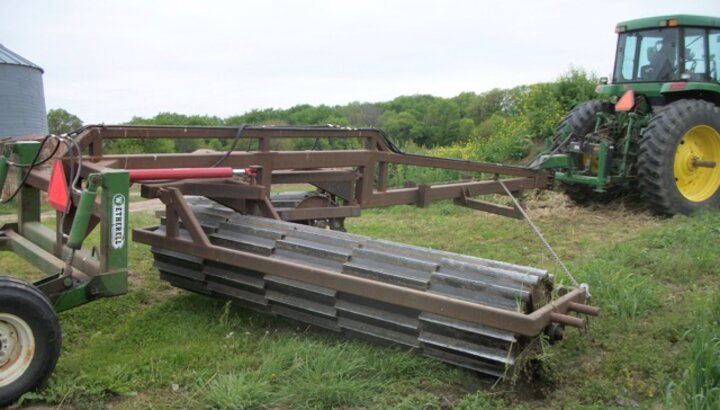

The crimper frame was fabricated in a welding shop using raw steel and custom-machined parts at a cost of $22,000 and a purchased 3-point hitch and lift wheel assemblies and hydraulics. It has an 18-foot span with two 2-foot by 10-foot drums. Staggered 2-foot by 2-inch by 2-inch angle iron blades spaced at 6 inches were welded to the drums. The edges of the blades were hard-surfaced with a welding bead. The drums fold back for transport and operate at an adjustable angle. It weighs about 4325 lb (725 lb frame and 1800 lb per each of two drums) without water and an additional 3600 lb with 110 gallons of water in each drum. Turning radius is about 30 feet (Figure 2). The rig can be transported on a 30-foot trailer or behind a tractor (Figure 3).
The roller-crimper was used in research at the South Central Agricultural Lab (SCAL) for two years and in three on-farm trials to terminate winter triticale or winter rye.
When the roller-crimper was operated with roller drums perpendicular to the direction of travel and to rye rows (Figure 4), the soil was visible through the mulch, and the rye rebounded. When operated with roller drums at a 75-degree angle relative to the center beam and moving at 8 mph (Figure 5), the roller-crimper tossed the rye diagonally, covering any soil and reducing the opportunity for weeds to grow. When soybeans were planted into crimped rye using a Great Plains no-till drill, the double-disc openers at a 7.5-inch spacing sliced through the diagonal mulch and improved rye kill.
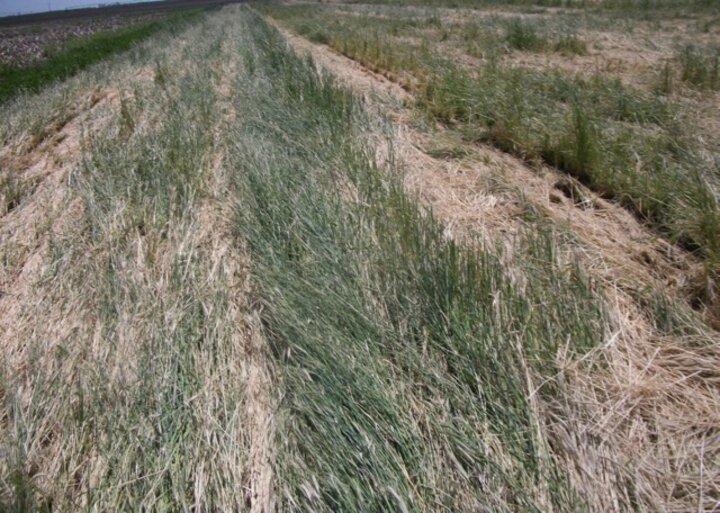
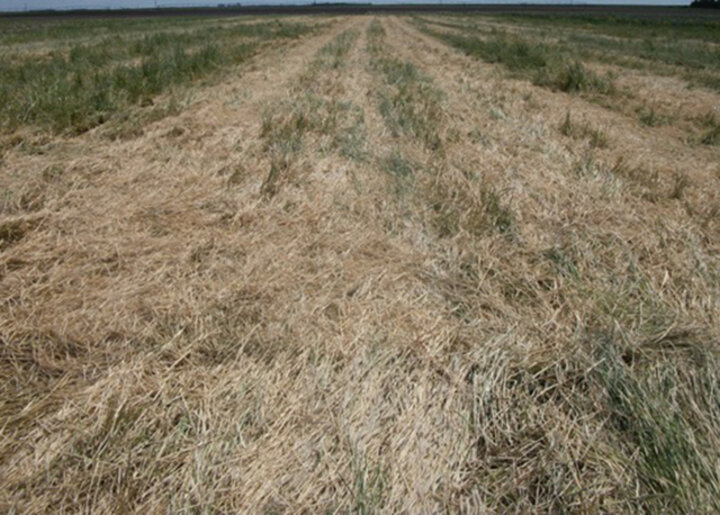
An effective no-till drill and high soybean planting rate are essential to make this system work. In places with thicker mulch, a Great Plains drill was not heavy enough to get all of the soybean seeds into the soil. In 2016 this resulted in a marginal soybean stand at a planting rate of 160,000 seeds per acre (Figure 6, July 29). We increased our planting rate to 210,000 seeds per acre in 2017 in a field scale demonstration with rye mulch (Figure 7, August 10). Late-season weeds such as velvetleaf and ragweed were scattered and easily removed by hand-pulling as the roots were shallow and easy to pull.
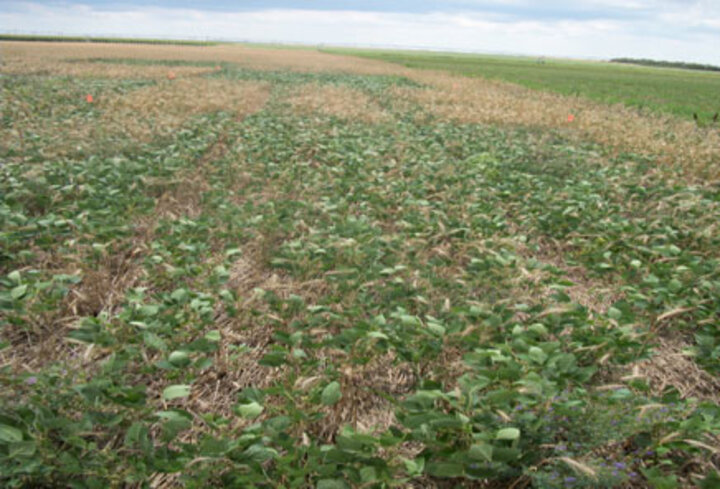
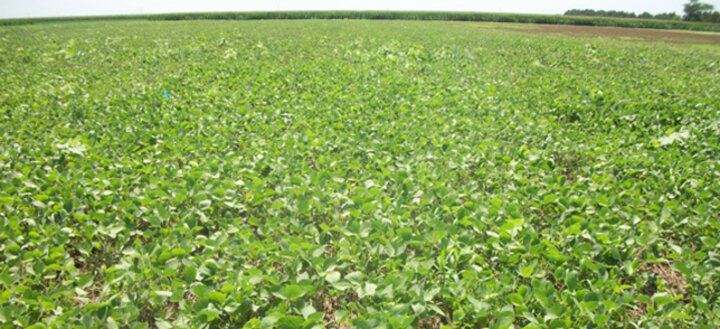
For further information, including results for a similar experiment with green beans, see CropWatch's Organic Farming site. For information on best management practices for soybean production following a roller-crimper, see Production of Soybean or Green Bean Following a Crimped Cover Crop.
Reviewers: Charles Wortmann and Gary Lesoing

